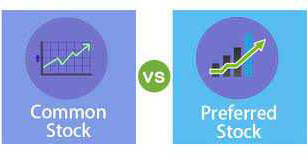Key Advantages Of The Approach To Take Into Consideration
Nov 30, 2023 By Triston Martin
Almost every kind of retirement plan comes with some favorable tax treatment, either in the beginning when you're still contributing to the account or later on when you start pulling money out. For instance, contributions to a standard 401(k) are made with money that has not yet been taxed, which lowers the amount of income that is subject to taxation. In contrast, Roth 401(k) plans are financed with money already taxed, but withdrawals are exempt from taxation. (Here are some further important distinctions that may be made between the two.)
Roth IRA vs. Traditional IRA
Individual retirement accounts, sometimes known as IRAs, are accounts that allow you to make investments while receiving favorable tax treatment. The most common kinds of IRAs are known as regular and Roth IRAs. To contribute to any of these, you need to have some earned income, such as earnings or a salary.
Individual Retirement Arrangements (IRAs) have their contribution limits and tax advantages determined by the Internal Revenue Service (IRS). Both regular IRAs and Roth IRAs have the same maximum amount that may be contributed each year. You have until the end of the tax year in 2022 to make contributions of up to $6,000 every year; however, if you are at least 50 years old (or older), you are eligible for an extra $1,000 contribution.
You are obligated to take what are required minimum distributions (RMDs) from a standard individual retirement account (IRA), which are withdrawals computed annually. With the approval of the SECURE Act by the United States Congress, the age at which you are required to start taking RMDs will rise from 70.5 years old to 72 years old starting in the year 2020.
On the other hand, there are no required minimum distributions (RMDs) for Roth IRAs throughout the owner's lifetime. Since of this, a Roth IRA is an excellent vehicle for asset transfer because you can leave the whole account and the tax advantages it provides to your heirs.
However, the Internal Revenue Service has modified the regulations regarding the mandatory minimum distribution that must be paid out to specified beneficiaries after the death of an IRA owner on or after December 31, 2019. Following the IRA owner passing away, all of the money must be dispersed no later than the end of the tenth year after their passing. Exemptions are available for certain qualifying designated beneficiaries, such as a spouse, who fall outside the general rule.
401(k) plans
A 401(k) plan is a tax-advantaged plan that allows participants to save money for their retirement in a tax-deferred manner. When an employee participates in a standard 401(k), the funds contributed to the plan come from pre-tax pay; hence, the employee's contributions do not count as taxable income. These contributions may grow tax-free inside the 401(k) plan until the time when they are withdrawn for retirement savings.
Distributions made beyond the age of retirement result in a taxable gain; however, withdrawals made before the age of 59 may be subject to extra taxes and penalties. When an employee participates in a Roth 401(k), their contributions are made using money that has already been taxed, and their earnings are exempt from taxation as long as they are taken beyond the age of 59 and a half.

403(b) plans
A 403(b) plan is quite similar to a 401(k) plan, except that it is often made available to employees of public schools, charities, and even certain churches. Because the employee pays into the plan with already taxed money, the contributions do not count as taxable income, and the assets may continue to grow tax-free until the employee reaches retirement age.
When one reaches retirement age, withdrawals are regarded as regular income, and taking distributions before age 59 might result in the imposition of extra taxes and penalties. A Roth 403(b) is a retirement plan that functions similarly to a Roth 401(k) in that it enables savers to make withdrawals from their accounts tax-free after they reach retirement age.

457(b) plans
Employees of state and local governments and some tax-exempt organizations are the only people eligible to participate in a 457(b) plan, which is very similar to a 401(k) plan. An employee may contribute to this tax-advantaged plan out of pre-tax pay, which means that the contributions will not result in taxable income. Contributions may grow tax-free up to the time of retirement under 457(b), but any money taken out of the account is subject to income tax.
Conclusion
Those qualified individuals to finance numerous retirement accounts and have the financial means to fund them do not have to decide since they have many options available. Finding the best alternative (or options) might be difficult for those who do not have the financial means to open many accounts.
-
 Investment Dec 14, 2023
Investment Dec 14, 2023Analyzing the Stock Market: A Close Look at Webull and Robinhood in 2023
Evaluate the strengths and weaknesses of Webull and Robinhood to make well-informed decisions about the optimal stock trading platform for your needs in 2023. Determine which platform aligns with your investment style and financial goals.
-
 Investment Feb 06, 2024
Investment Feb 06, 2024Compare and Discuss: Preferred vs. Common Stock
There is a big gap between preferred and common stock regarding their differences. Holders of common stock normally have one vote for each share they own, whereas holders of preferred stock do not typically have voting rights.
-
 Banking Oct 16, 2023
Banking Oct 16, 2023PGA Tour Cash Rewards World – A Complete Guide
PGA Tour Cash Rewards World MasterCard is an amazig golf card and if you want to know more about this then this article is just for you
-
 Investment Jan 22, 2024
Investment Jan 22, 2024What To Consider When Using An Emergency Fund In 2022
It would be best if you always had some cash stashed away in case of emergencies. While three to six months' worth of spending is the norm, experts say that a year's worth of expenses is necessary to weather the economic crisis and lockdown expected in 2022. In an emergency, people should store their savings in liquid accounts. People may utilize their financial windfalls, such as tax returns, to further their savings. Some companies provide incentive schemes to help workers save up money for emergencies.
